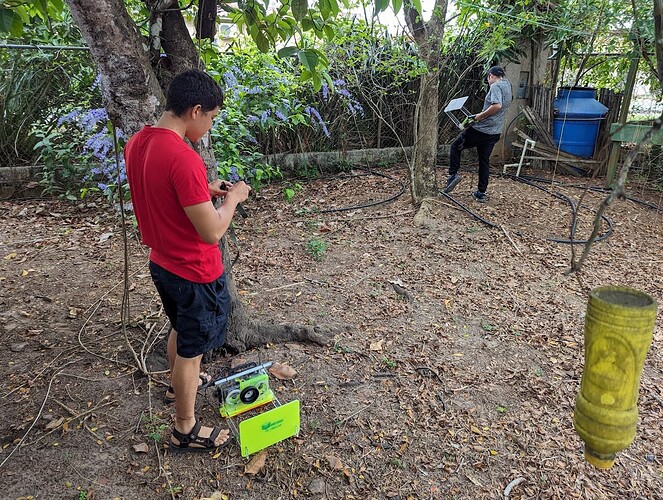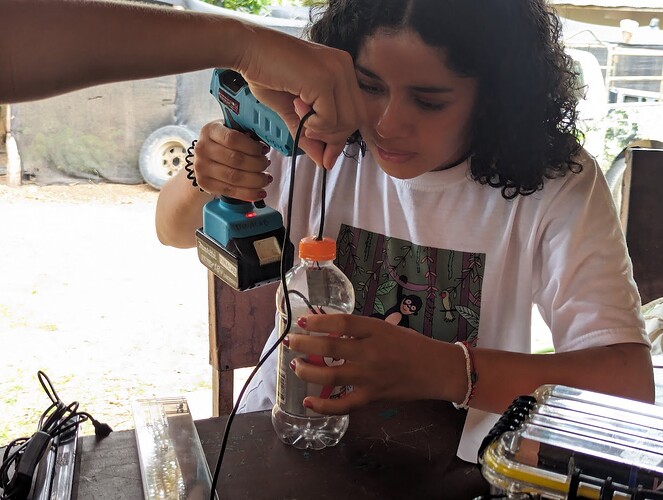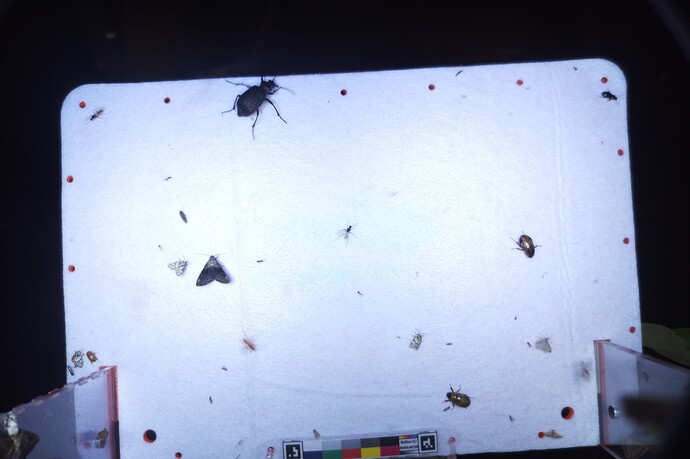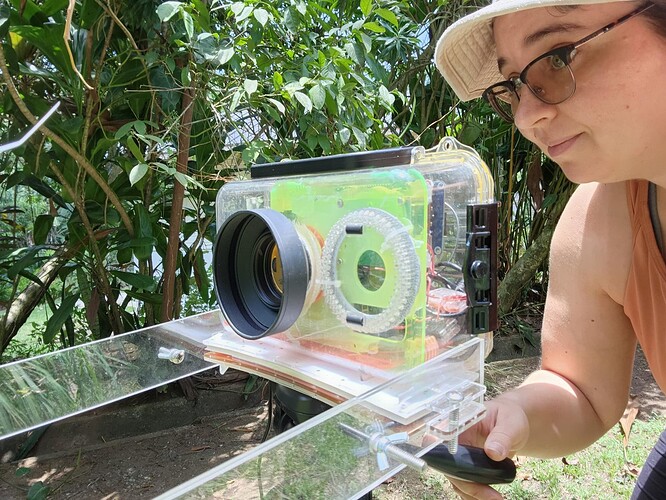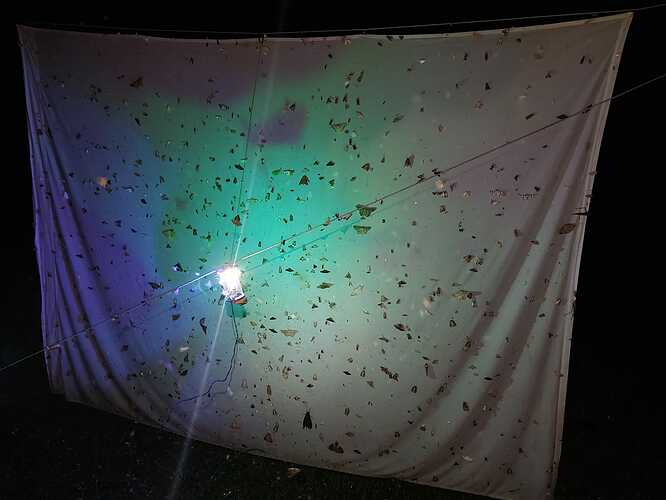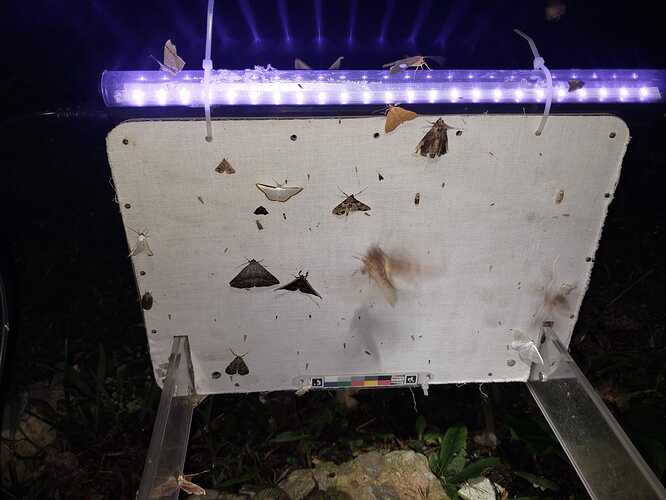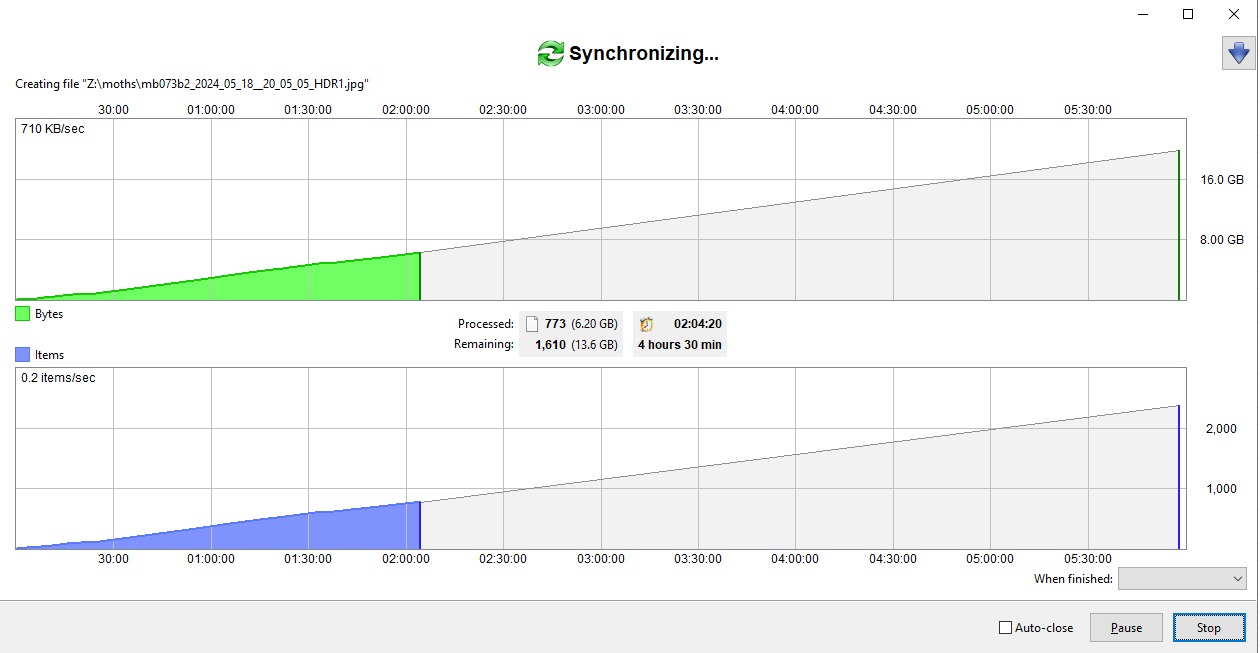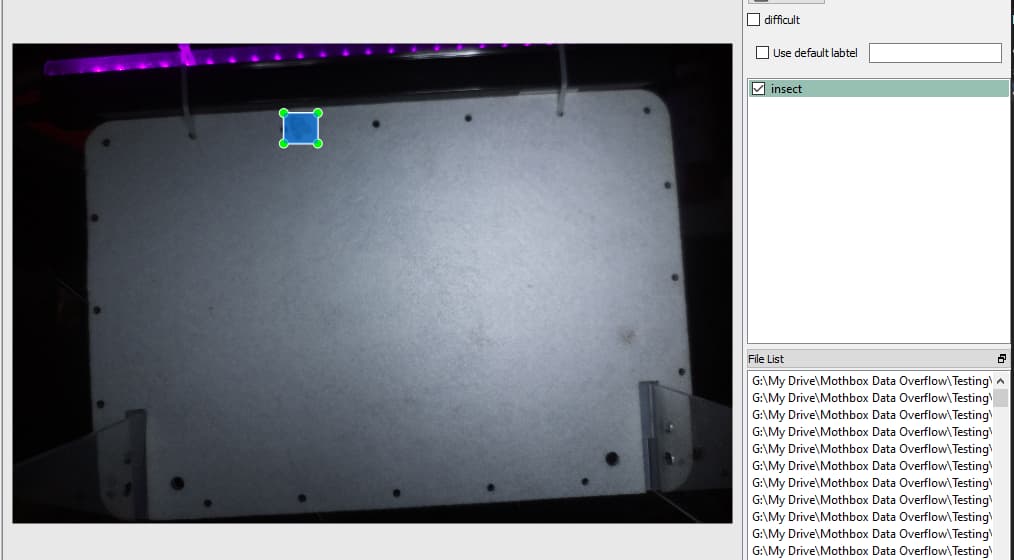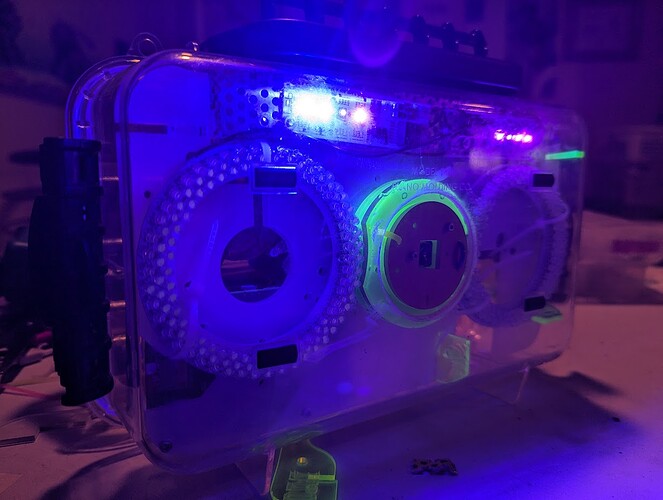The last two months have been bustling with fun mothbox developments!
Deployment in Azuero
Our first full deployment went wonderfully! Andy and Kitty trained @Hubertszcz 's field tech’s in how to run and repair the mothboxes in Western Panama. We did the workshop with our partner’s doing stuff on the ground there, the amazing community non-profit Pro-Eco Azuero. This is also one of the groups the amazing fulbrighter- @briannaljohns will likely be doing some of her open science workshops with this upcoming year, so this was a nice beta test for these workshops!
They already pulled in 140GB of awesome data from the field! This is a big moment for the project, as this data was collected without anyone from the development team setting up or collecting the mothboxes! Yay it works!
Solar! Multi-batteries! Kitty Experiments
This is possibly some of our most exciting news! Kitty from Dinalab spent April running mothboxes through their paces and doing some research on failure points, and gathering general statistics about the mothboxes functions. Many things, like how long a mothbox might last on its little battery, we had calculated theoretically, but never had a chance to do real, empirical tests multiple times to prove it! but Kitty helped out a ton with that!
We use these Talentcell 12V Lithium ion Battery PB120B1, which, as far as I can tell, are the beefiest batteries you can easily take on planes, and they are quite inexpensive for how much energy they can store! They also seem to be decently available around the world.
A really nice thing about these batteries is that you can totally just link them together, or add a 12V solar panel (up to 60W). (This is actually the answer to a question I had earlier)
So kitty ran the following tests. Each of our mothboxes is currently scheduled to do a typical survey where it turns itself on and off throughout a night for a total of 4 working hours per night.
| Battery Configuration | Hours of service | Nights of Work |
|---|---|---|
| Regular MB (1 battery) | 10 hours | 2 |
| MB + 20W Solar (2 nights in a row) | 12 hours | 2 |
| MB + Extra Battery | 20 hours | 4.5 |
| MB + 2 Extra Batteries | 30 hours | 7 |
So a great thing is this lets our design be modular! You can see that the Solar panel didn’t seem to add too much longevity to the Mothbox in those two nights. We only got about an hour of extra battery each day the mothbox was out. But those nights were also run consecutively. In the field, we aim to leave some mothboxes out for a whole month, but only maybe 4-6 nights out of the whole month, which gives plenty of time to charge up with the sun!
What I am perhaps even more excited about is that we can daisy chain extra batteries together for deployments that need to collect data over 4-8 nights. Each battery gives a little over 2 nights worth of work. So if a mothbox needs to go somewhere deep in the forest where solar will do little, but work for a long time, this can be done by just connecting the mothbox to an additional waterproof box full of a couple batteries together. (*note we haven’t experimented with more than 3). But this really opens up for a very modular, low-cost experimental design!
Hubert is in Peru
Hubert is out exploring different forests with the mothbox and mothbeam.
Mothbeam is amazing!
First of all the mothbeam is doing AMAZING. He’s been testing it in the forests around him, and this open-source low cost ($60-$100) version of a Lepiled is brining in the moths from all over! @moritz_lablab has already been getting new orders from entomologists talking to hubert and being impressed with how great this is working!
Mothbox Field Imaging Challenge
The mothbox was doing great. Hubert noted that the el cheapo $5 led UV strip we had been using with the mothbox didn’t seem to be doing as hot in this forest as other places he tried it (especially compared to the mothbeam!). But it was getting some cool bugs!
but then an error happened with the older image of the software his mothbox was using, and the pi filled up with data to the point it would not boot up anymore (an older version of my backupper script wasn’t deleting backed up data properly). So now he needs to flash a new image onto his raspberry pi, or figure out how to access the data of the current card. But he only has his android phone. We found one program, raspberry pi imager, that lets you flash a SD card, BUT your phone has to have root access to do it. If anyone out there knows how to help him, reach out to him! He’s missing cool bugs!
TOO MUCH DATA
Speaking of too much data, we are getting like 20GB a day of photos from the moths. This quickly ate up our google drive we had been storing things, and we found out that google drive counts the data against the people hosting a folder and whoever uploaded the data too! So if our field techs uploaded some data, they could only do up to 15GB on their free account. and then to transfer ownership and free up space ONE HAS TO MANUALLY CHANGE OWNERSHIP OF EACH FILE, ONE AT A TIME. This is totally unacceptable. so we are looking for other ways to transfer and store data between our folks at different field sites.
Hetzner Storage Box
Our buddy craig recommended this. Which seems like about the cheapest way to get online storage (5 TB for like $12 a month). And i set it up, but i’m getting abysmal upload speeds. I don’t know if this is normal for this service, or because I’m going from panama to Helsinki? but it barely makes it over 1mb a second.
We tried using WebDAV, FTP, Samba, and they all seem about similarly slow.
If you have any recommendations for how i can make this faster, or a good alternative thing we can upload our moth data to that isn’t too expensive, let us know!
Yolo Moths - Insect Pre-Filter
Another solution to our heavy data problem is pre-processing a lot of the data onsite. We get lots of high res photos of moths, but many of those pixels aren’t even moths at all, they are just blank backgrounds.
For instance, one night’s data (about 20GB of photos) had just one moth come visit. Each photo is about 10mB, and a moth like this only takes up maybe 1/100th the amount of pixels.
So one goal is to make a pre-processor that simply learns what our very simple backgrounds look like (we can’t just do simple background detection because of minor variations between mothboxes and ambient disturbances). And then selects and crops out all the visiting creatures into individual little photos.
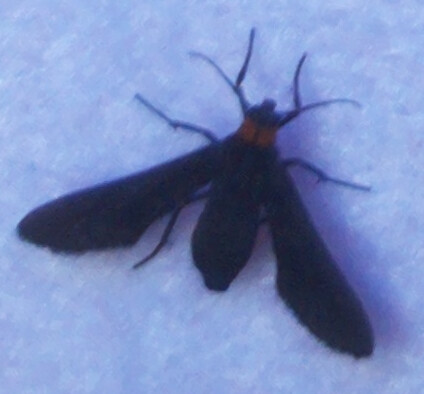
Then we can save all these, upload them, and then have human taxonomists (and eventually AI identifiers) try to identify these.
I posted over here in the GOSH forum if anyone knows how to help me quickly build and train such a little offline pre-processor
Talking Mothbox as ESIIL
I was just at this Environmental Data Summit for Innovation ESIIL Innovation Summit 2024
It was a very nice event, well funded, and very inclusive of many different voices. They will have another one next year you should apply to!
Anyway, I connected with lots of people from big environmental data sensor places like LTER and NEON which are stations in the USA that collect long term ecological data. and they make lots of fancy public databases so folks can do neat things with the data! I was talking with them about the Mothboxes and they offered to show us how folks like Hubert can format their ecological data so they can add it to databases like these. So that’s cool!
V4 improvements coming VERY SOON!
After these rounds of field tests we are eliminating some hardware, streamlining the design, making the build process easier, making the whole thing more portable and weather resistant, and dropping the materials cost about $75 per mothbox. So down from about $400 to like $330.
Keep Sharing updates to your Open Science Projects!
It takes a good amount of time to document and share all these updates (this one took about 4 hours to put together). I could have spent this time doing more programming or designing, but it’s important to do research publicly!
Many times folks, especially scientists, wait until everything is finished and polished to share what they are working on or what they have discovered. This is for many reasons ranging from perfectionism to institutional fear of being “scooped.” But this is all non-sense that stems from a culture of competition in science. Science is only realized through sharing, but capitalist competitive culture that has invaded our academic institutions wants to make you scared that by sharing someone will get credit for “your” idea.
The reality is, the best way to prevent someone from replicating the thing you are working on is to share it as publicly as you can! There’s plenty of problems to solve in the world, and we need to chew on these big mysteries of the world together! This also makes everyone’s science more efficient by helping people not re-invent the wheel when they don’t need to!
Also not only is it helpful to receive feedback from the community, but documenting your work periodically helps you step back from your work, reflect on your process, and keep your project both focused and flexible!
For example many times when I share an update or a problem, I am working on, 80% of the solution often comes from just writing out the problem I am dealing with. The additional bonus is that after you wrote and published this problem, OTHER people who might have that problem in the future can also find it on the internet! (I have even found my own posts before when dealing with problems i had previously solved, hahahha).
So anyway, fight the fear, and share your cool stuff you are working on!

